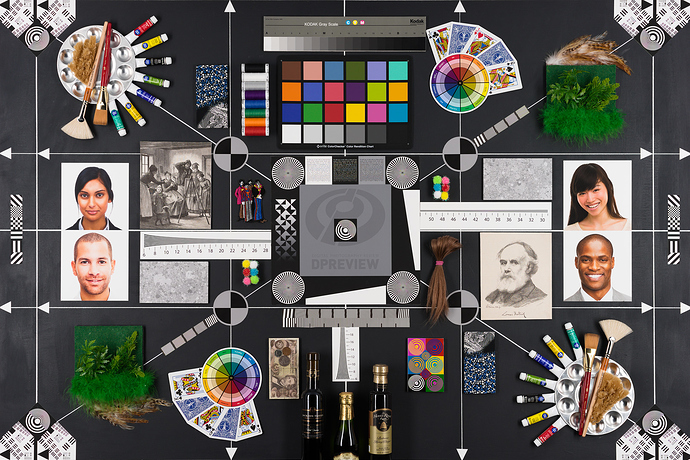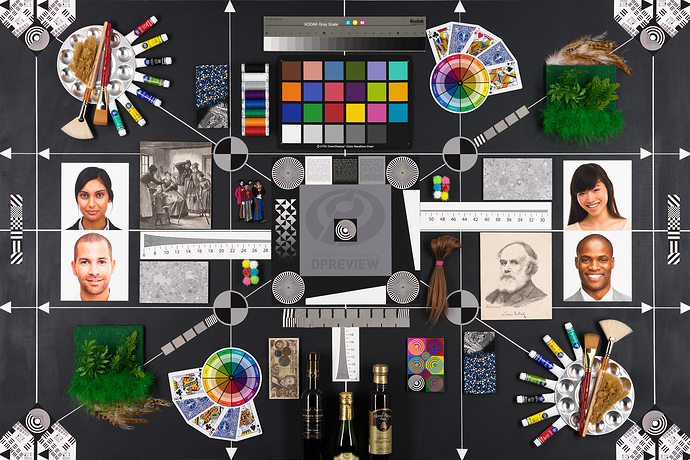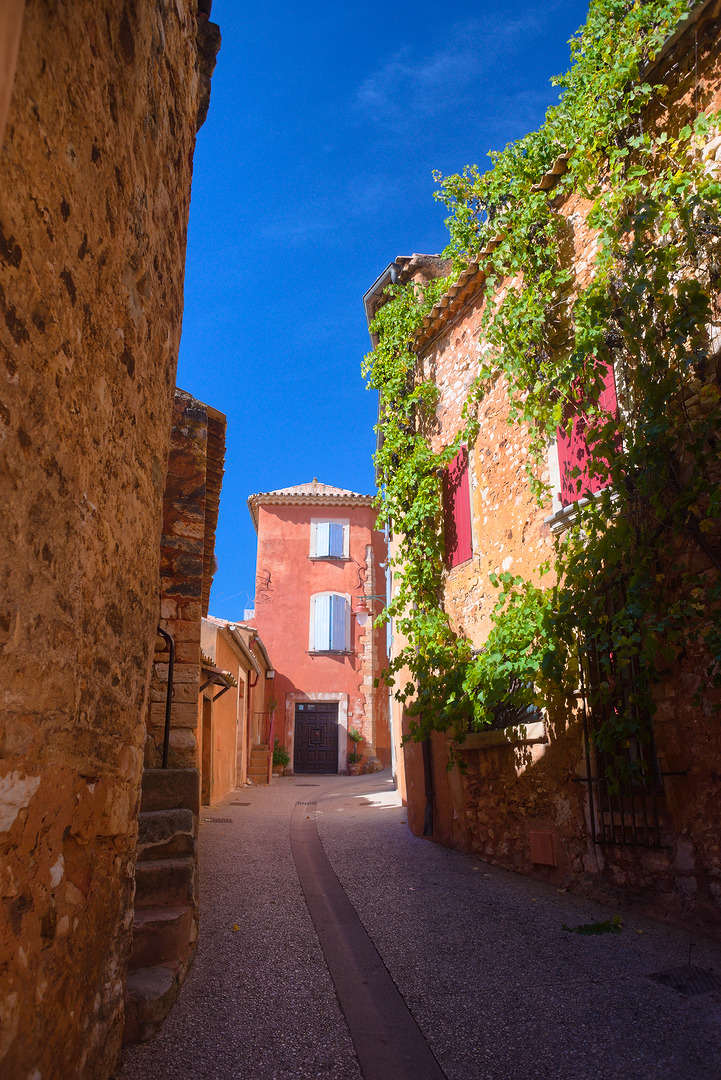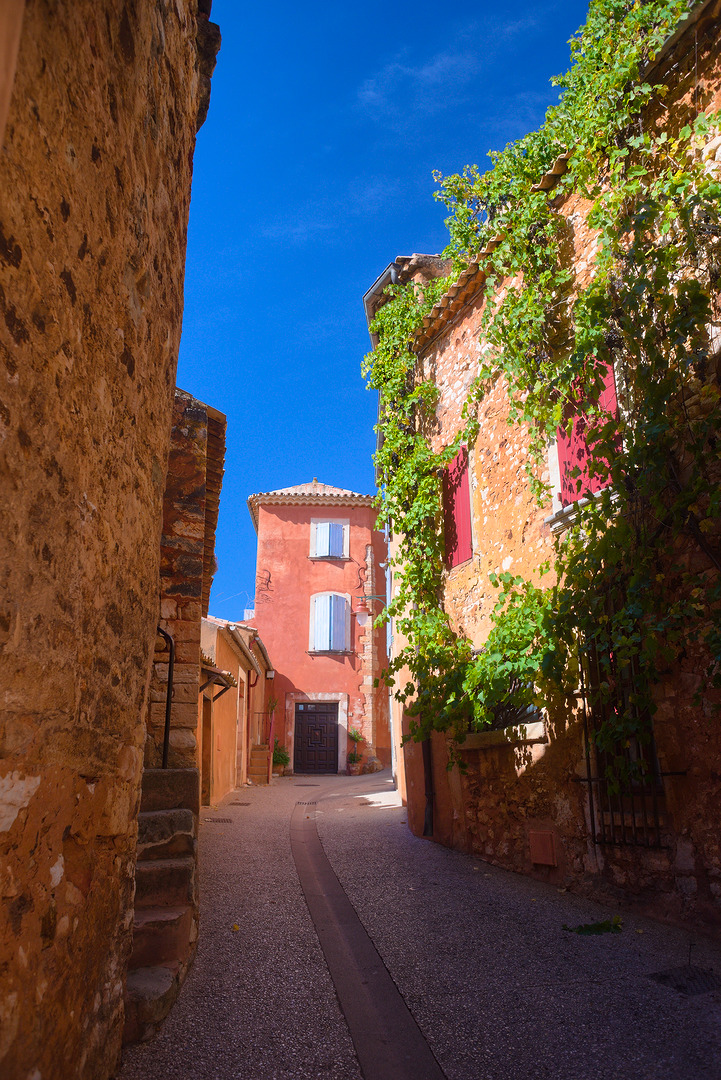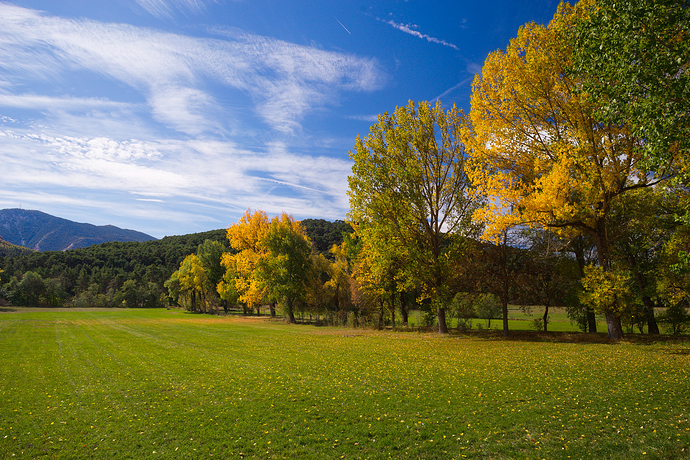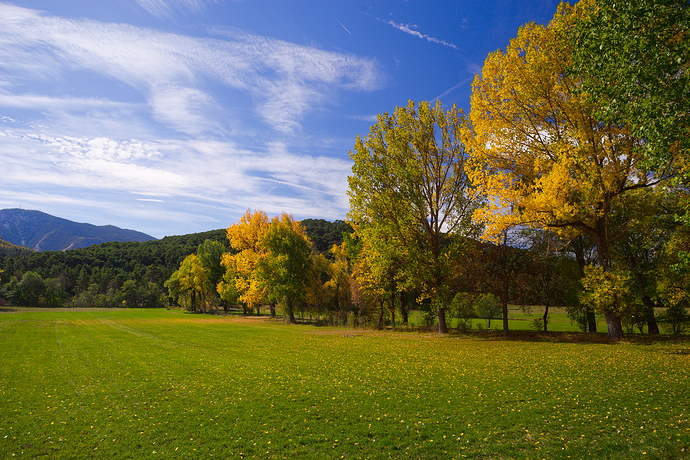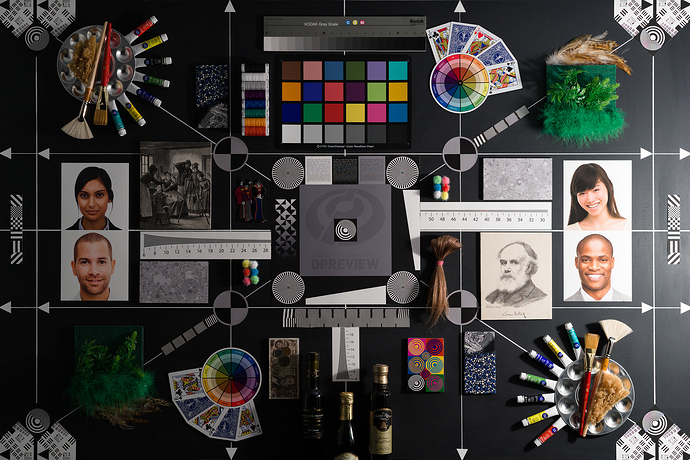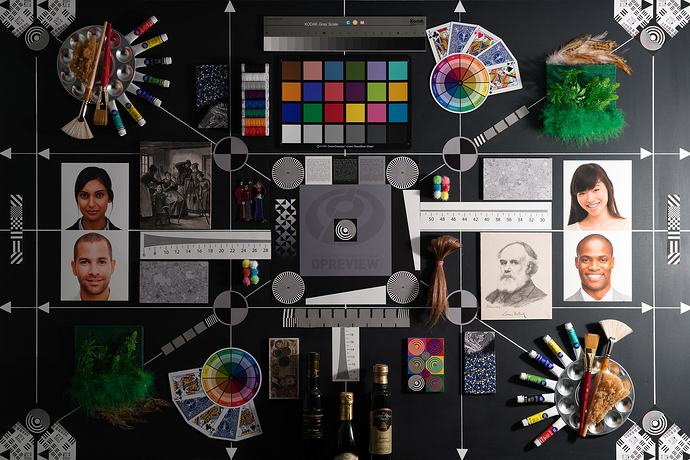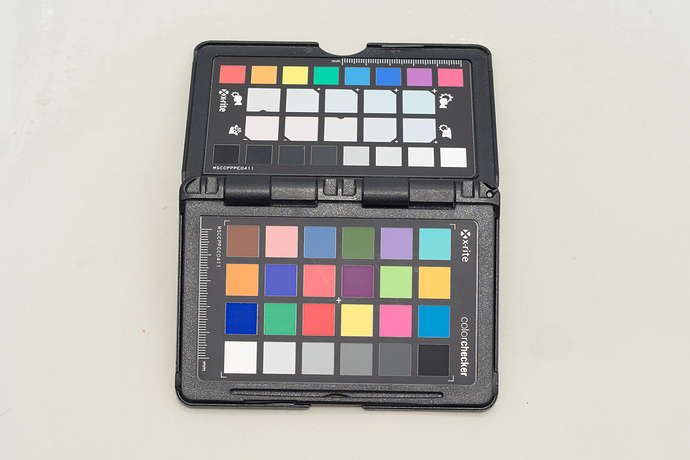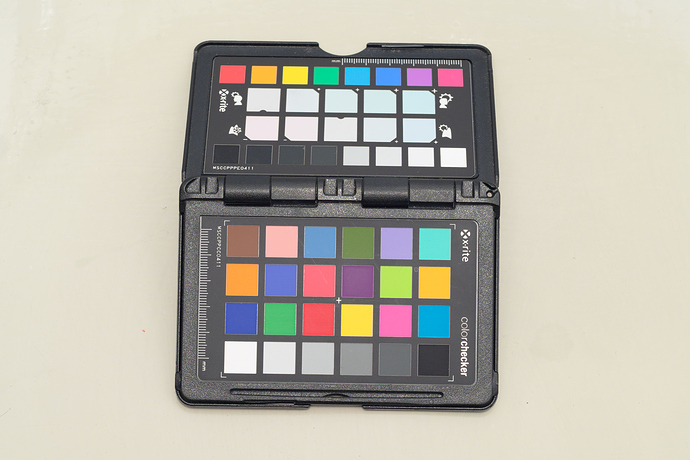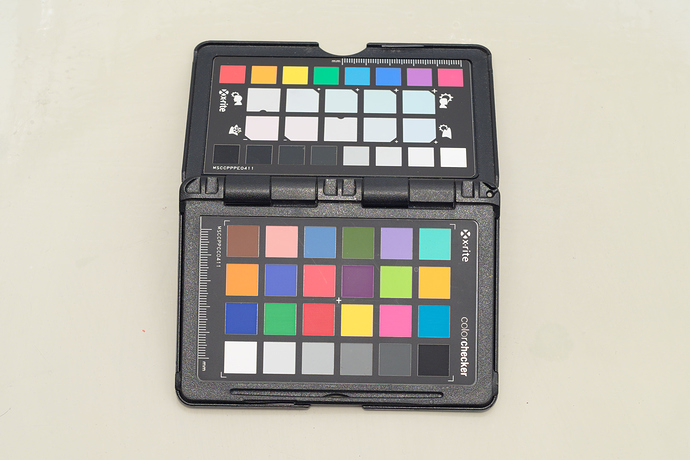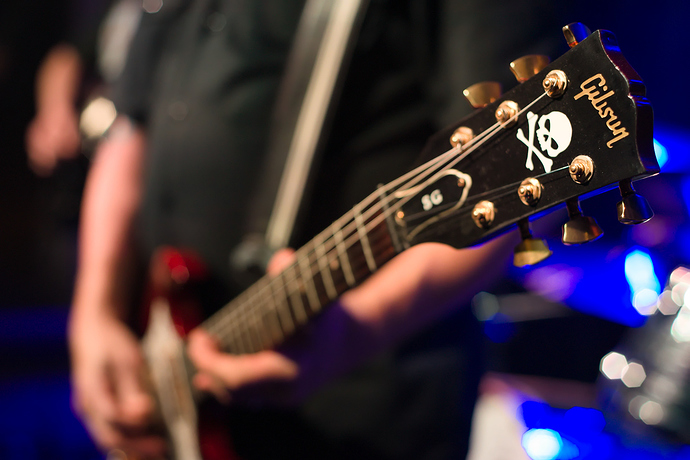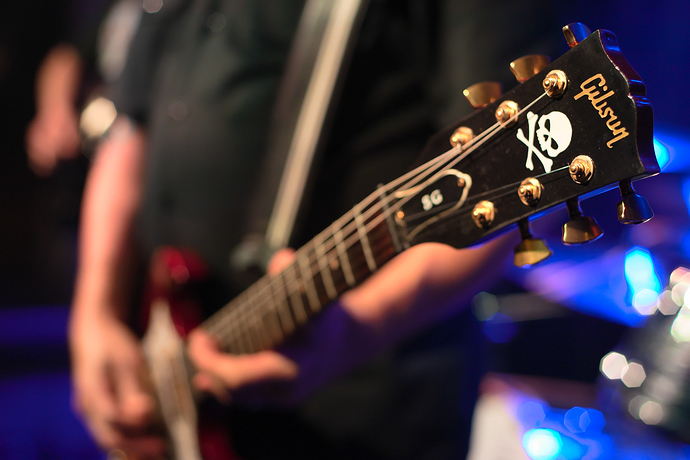Out of curiosity, on @agriggio’s hint, I decided to compare how far off a dual-illuminant DCP input profile created using DPReview’s Studio Scene shots would be compared to a DCP created from self-taken, meticulously executed shots. Taking photos of a color target for general use, i.e. the profiles we ship with RawTherapee, should be done carefully to ensure that the photos are as close to how they should be as possible. This means using light as pure as possible, avoiding glare, avoiding reflections, ensuring the target is evenly lit, etc. (see the RawPedia article, Shooting the Color Target).
I don’t know how meticulous the DPReview folk are with the lighting they use in their Studio Scene shots. Regardless, the photos are clearly designed to test cameras and lenses, but not to be used for creating color profiles - the target area is small, unevenly lit and underexposed, and the quality of the light is unknown.
It turns out that despite these shortcomings, the resulting DCPs function fairly well. Lumariver Profile Designer compensates for the inadequacies, and the end results do not vary much from those created using meticulously-executed shots taken under real daylight and real tungsten. This is good news for people shooting with camera models for which we don’t have DCPs yet, and who do not own a color target - you can make one using the Studio Scene shots and get fairly good results in your daylight and tungsten-lit scenes. More importantly, not using a dual-illuminant DCP when processing photos shot under modern artificial light, including LEDs, low-pressure sodium lamps, metal halide and so forth, will definitely result in problems (such as blue areas being too saturated, out-of-gamut, clipped) which you can avoid by using a dual-illuminant DCP profile despite the fact that the profile was designed using a target shot under tungsten light. In other words, it is better to use a profile made under tungsten light when processing photos shot under artificial non-tungsten light, than not using such a profile at all.
Studio Scene shots: Image comparison: Digital Photography Review
DCP - RT: SONY ILCE-7M2.dcp (1.1 MB)
DCP - SS: SONY ILCE-7M2 studio_scene.dcp (1.1 MB)
These test shots from a SONY ILCE-7M2.
The “Matrix” version is using a standard ColorMatrix2 derived either from dcraw or Adobe DNG Converter.
The “RT” version is using the DCP profile shipped with RawTherapee, which I made from meticulously executed daylight+tungsten shots of an X-Rite ColorChecker Passport (50 patches).
The “SS” version is using the DCP I made using DPReview’s Studio Scene shots, based on an X-Rite ColorChecker 24 target (24 patches).
-
- Daylight 1 - Matrix
- Daylight 1 - RT
- Daylight 1 - SS
-
- Daylight 2 - Matrix
- Daylight 2 - RT
- Daylight 2 - SS
-
- Daylight 3 - Matrix
- Daylight 3 - RT
- Daylight 3 - SS
-
- Tungsten 1 - Matrix
- Tungsten 1 - RT
- Tungsten 1 - SS
-
- Tungsten 2 - Matrix
- Tungsten 2 - RT
- Tungsten 2 - SS
-
- LED 1 - Matrix
- LED 1 - RT
- LED 1 - SS
The DCPs are fairly similar, which is not surprising considering their purpose. The simple matrix behaves fairly well in daylight, which again is not surprising at it is designed for daylight, but fails miserably when used on shots lit by non-daylight (you could of course design an ICC matrix for tungsten).
Note how the hues are significantly off in the matrix non-daylight shots, and how the blue patch is oversaturated causing out-of-gamut clipping. The red patch is prone to doing that as well, though its not visible in this example.
In conclusion, while you may get away with using any profile for day-lit shots, you need a dedicated profile for any other lighting, and a DCP made from low-quality shots is far better than no DCP at all (i.e. far better than falling back to a daylight matrix for non-daylight shots).

